Abstract
Inorganic arsenicals have been used in agriculture as pesticides or defoliants for many years and, in localized areas, oxides of arsenic have contaminated soils as a result of fallout from ore-smelting operations and coal-fired power plants. Use of inorganic arsenicals is no longer permitted in most agricultural operations, and recent air pollution controls have markedly reduced contamination from smelters. Thus, this paper will concentrate on the effect of past applications on arsenic accumulation in soil, phytotoxicity to and uptake by plants as influenced by soil properties, and alleviation of the deleterious effects of arsenic.
Once incorporated into the soil, inorganic arsenical pesticides and arsenic oxides revert to arsenates, except where the soil is under reducing conditions. The arsenate ion has properties similar to that of orthophosphate, and is readily sorbed by iron and aluminum components. This reaction greatly restricts the downward movement (leaching) of arsenic in soils and the availability of arsenic to plants.
Several methods of estimating plant available arsenic in soils have been developed. They involve extraction of the soil with reagents used to estimate phosphorus availability. This extractable arsenic is reasonably well correlated with reduced plant growth by, and plant uptake of arsenic. For most plants, levels of arsenic in the edible portion of the plant are well below the critical concentration for animal or human consumption, even when severe phytotoxicity occurs.
Alleviation of arsenic phytotoxicity has been attempted by increasing the soil pH, by use of iron or aluminum sulfate, by desorbing arsenate with phosphate and subsequent leaching, and by cultural practices such as deep plowing. Only limited benefits have accrued from these procedures the cost of which is often prohibitively high. Since attempts to reduce arsenic toxicity have not been very successful, its excessive accumulation in soils should be avoided.
Full text
PDF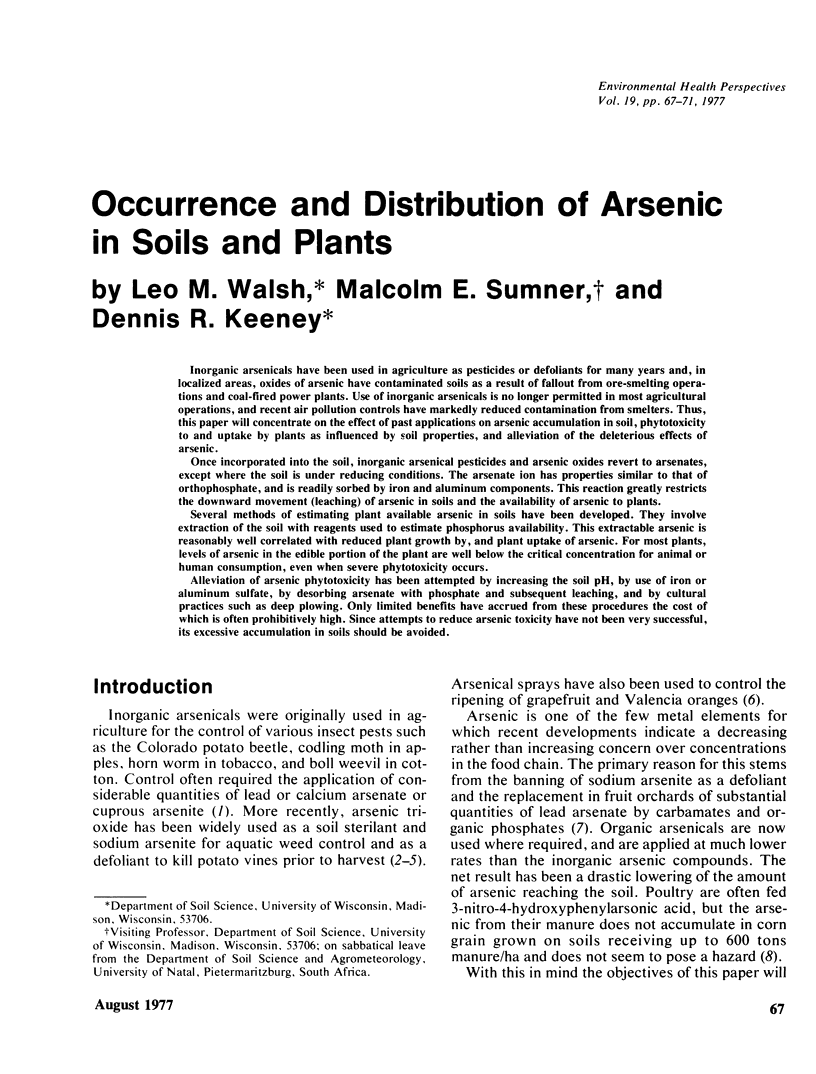
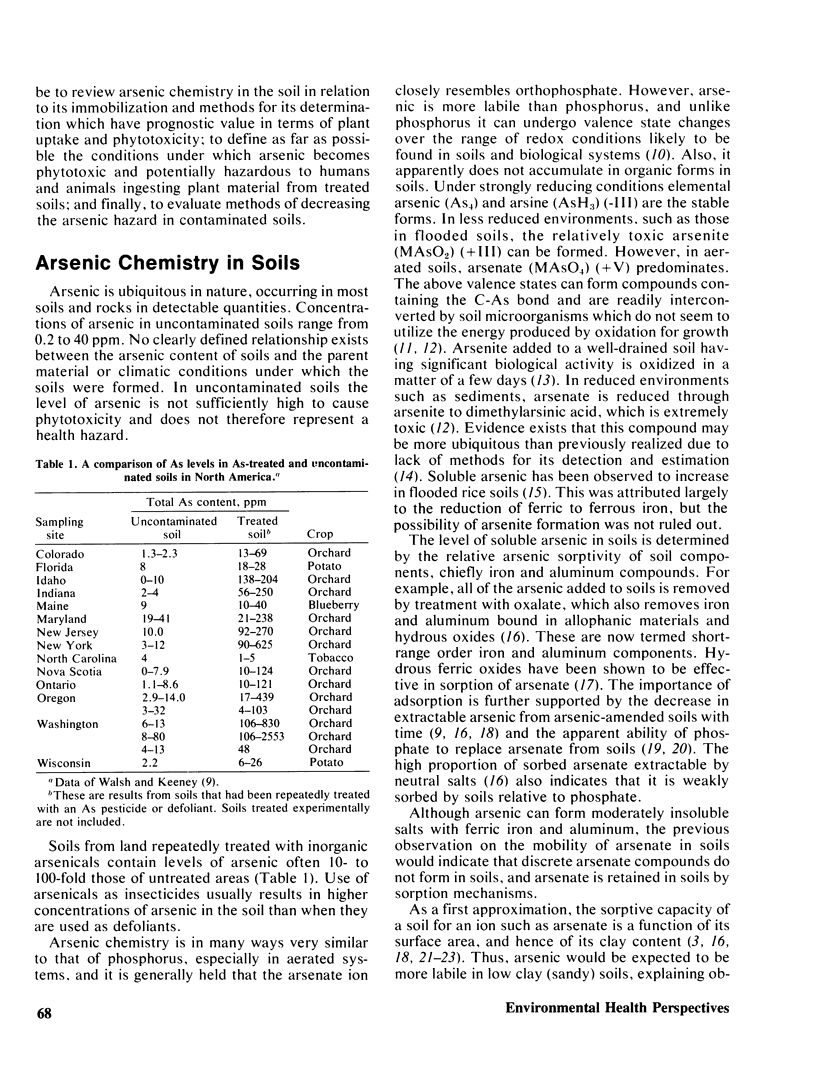
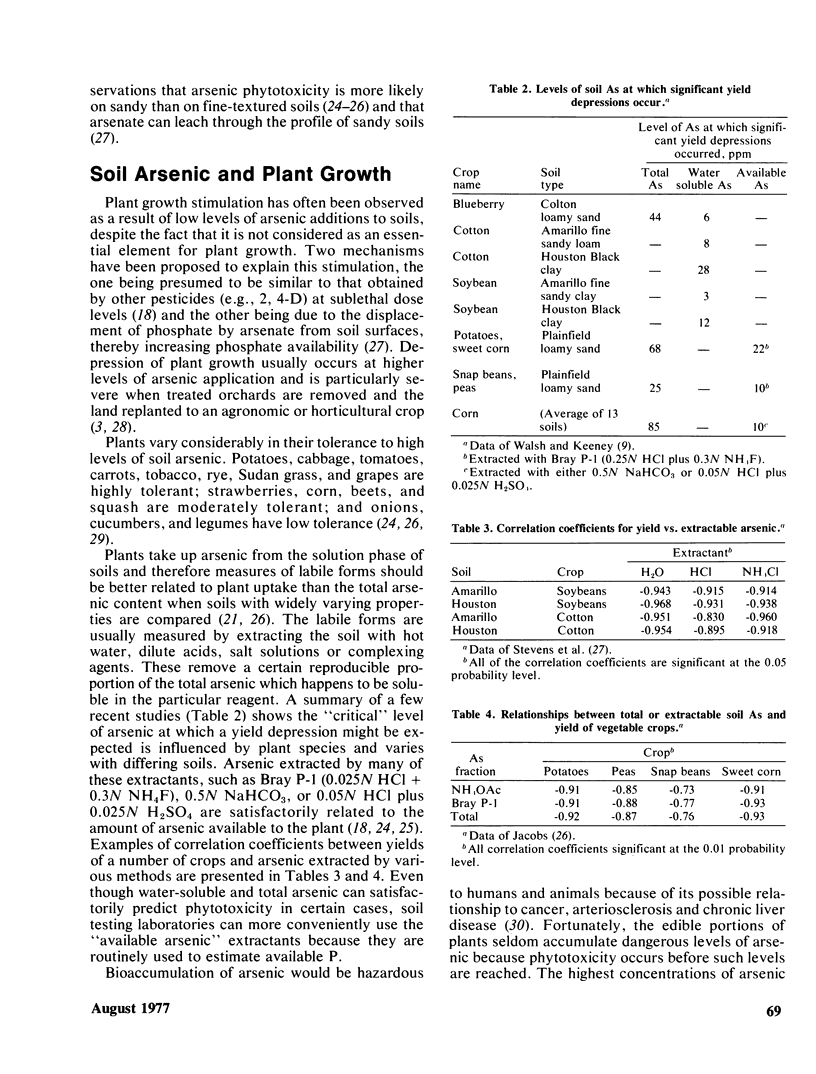
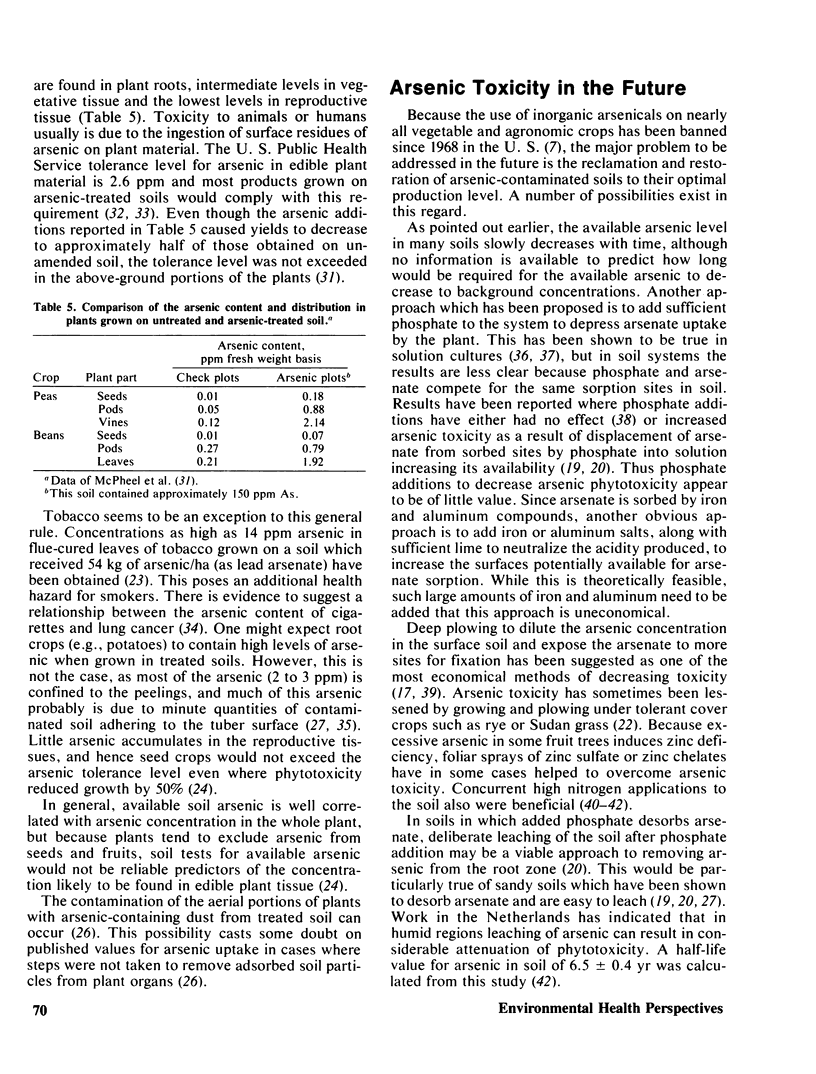
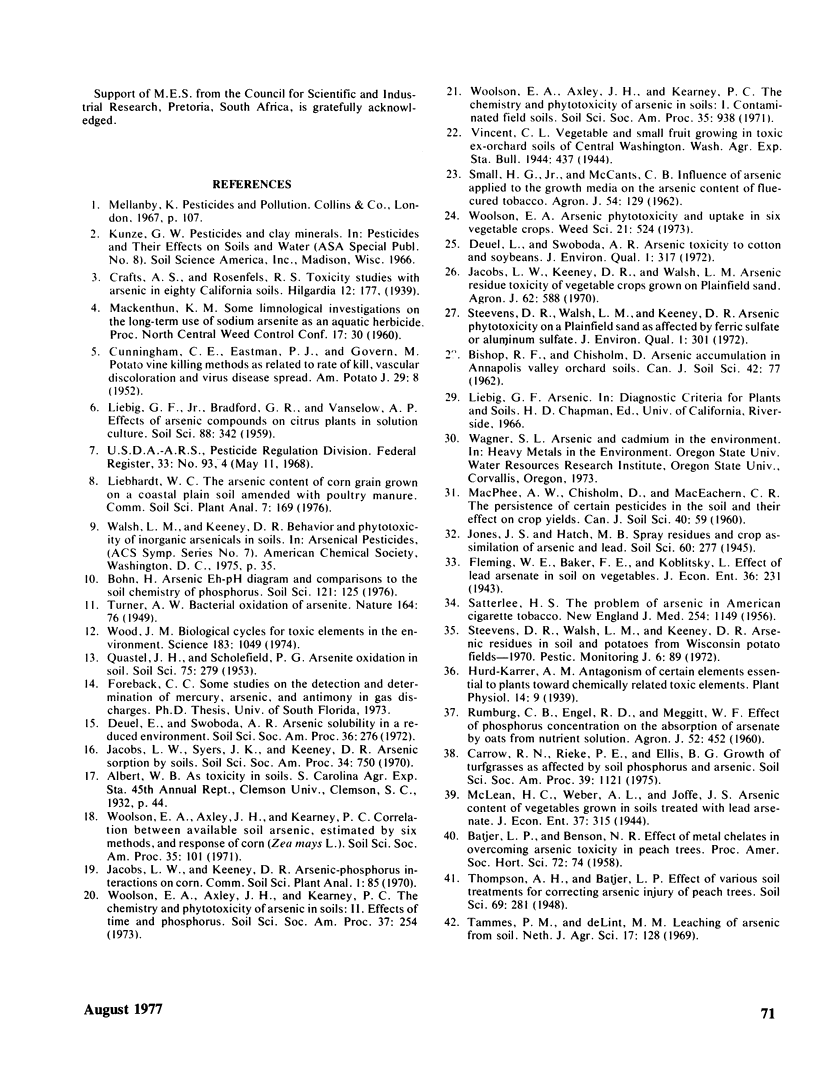
Selected References
These references are in PubMed. This may not be the complete list of references from this article.
- Hurd-Karrer A. M. ANTAGONISM OF CERTAIN ELEMENTS ESSENTIAL TO PLANTS TOWARD CHEMICALLY RELATED TOXIC ELEMENTS. Plant Physiol. 1939 Jan;14(1):9–29. doi: 10.1104/pp.14.1.9. [DOI] [PMC free article] [PubMed] [Google Scholar]
- SATTERLEE H. S. The problem of arsenic in American cigarette tobacco. N Engl J Med. 1956 Jun 21;254(25):1149–1154. doi: 10.1056/NEJM195606212542501. [DOI] [PubMed] [Google Scholar]
- Wood J. M. Biological cycles for toxic elements in the environment. Science. 1974 Mar 15;183(4129):1049–1052. doi: 10.1126/science.183.4129.1049. [DOI] [PubMed] [Google Scholar]


